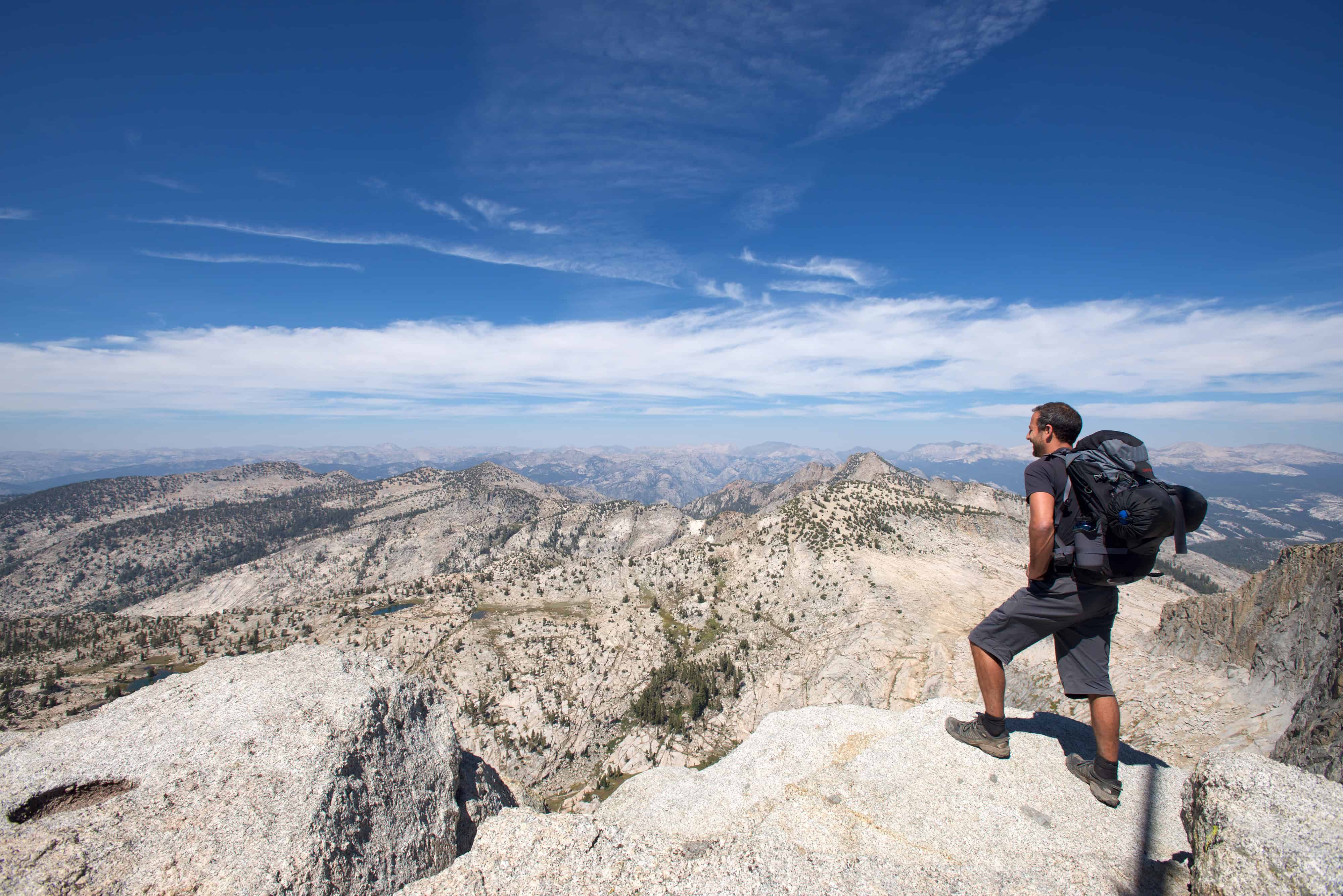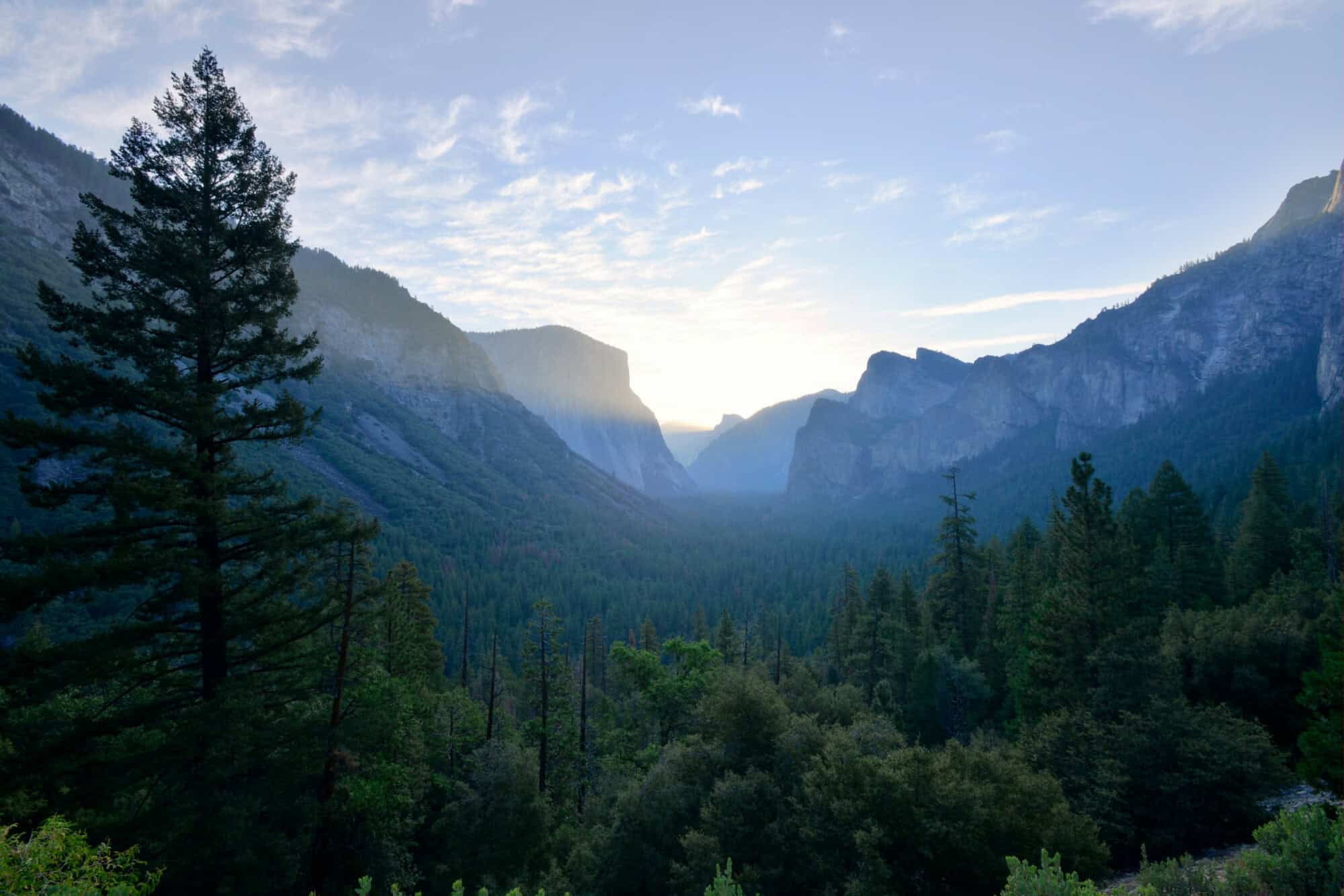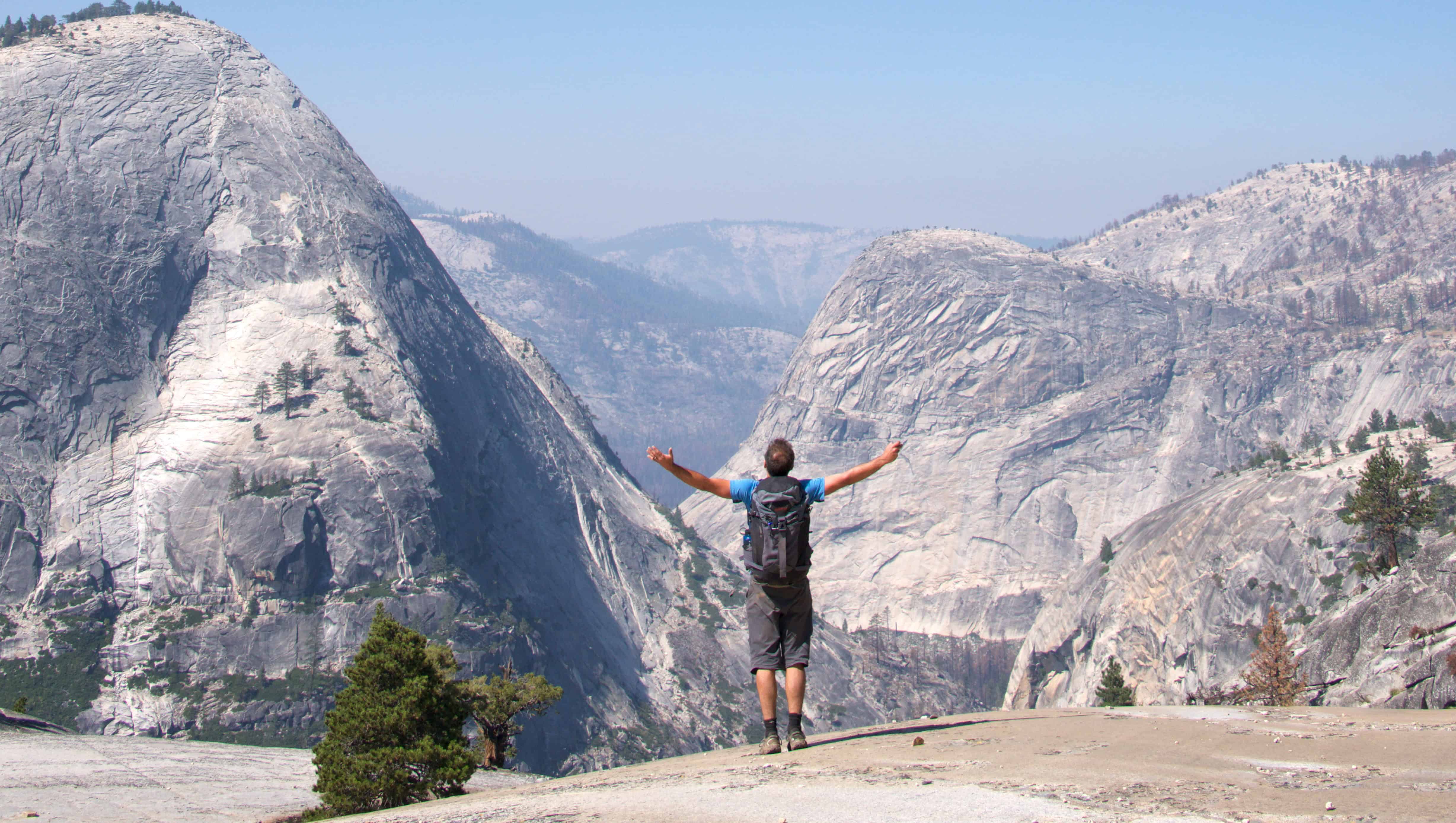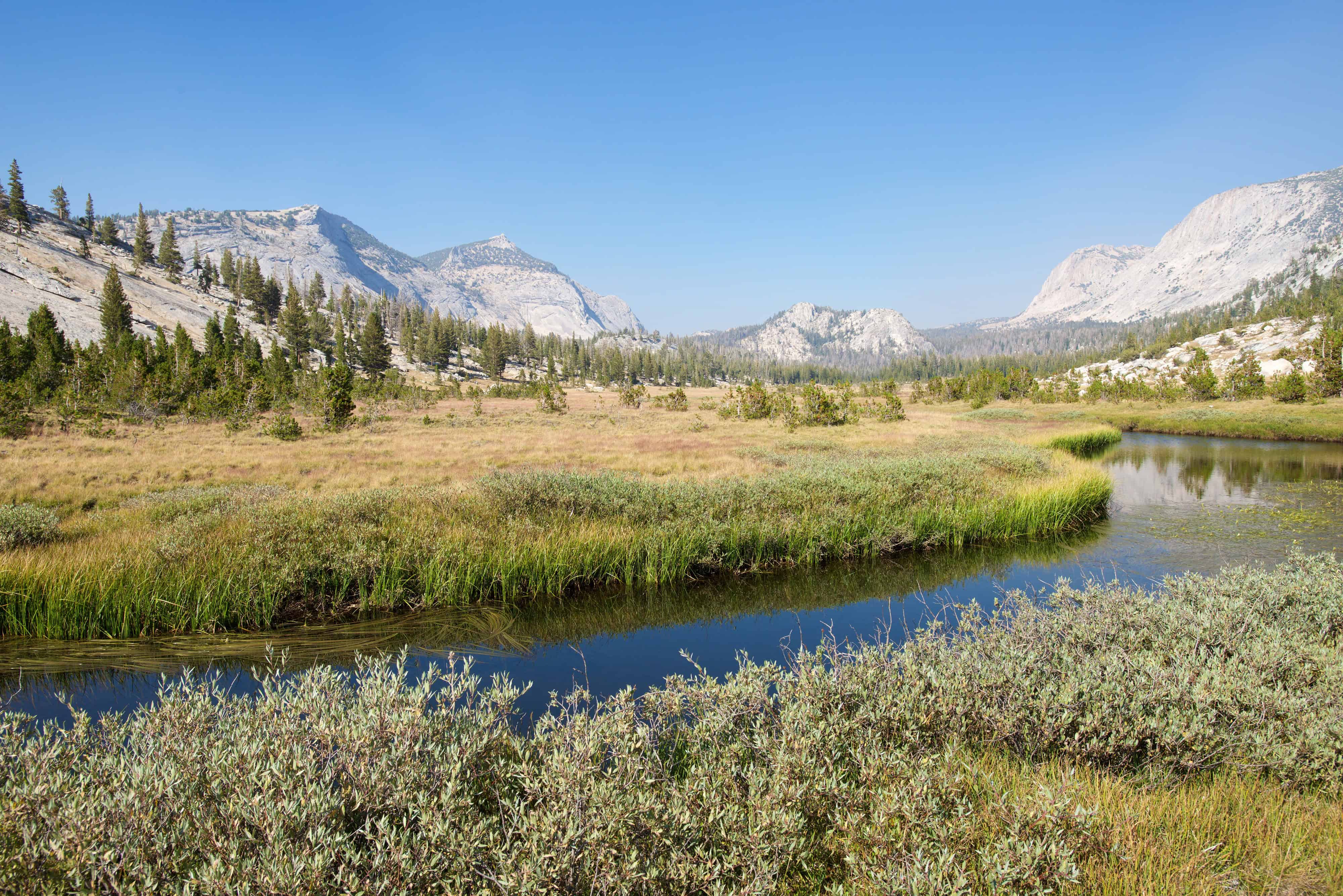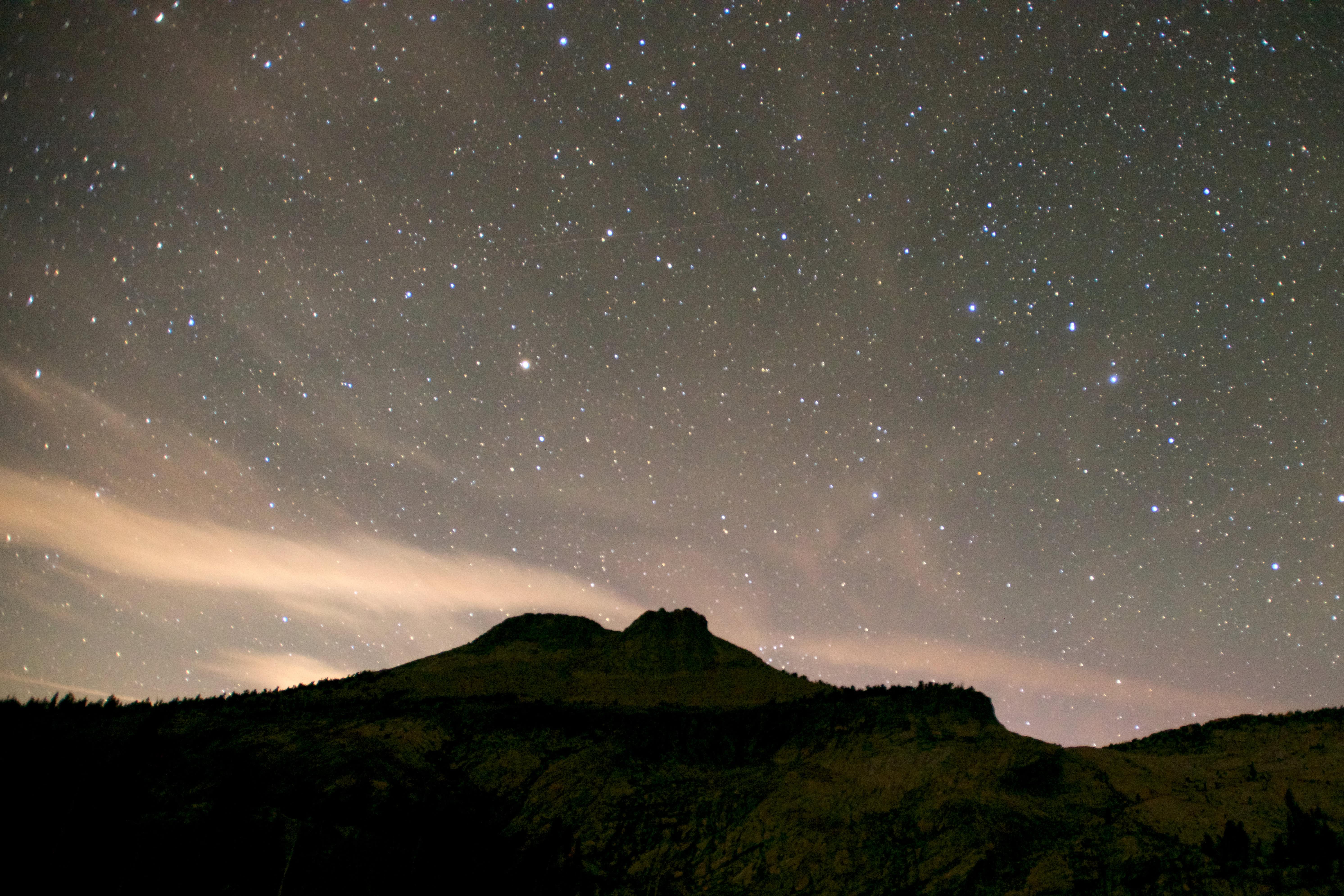Ahead of the 100th anniversary of America’s National Park Service, Aaron Millar walks deep into Yosemite and discovers the power of conservation’s birthplace
Mount Hoffmann rises from the forests of Yosemite like a stone titan. From its steep and dauntingly exposed 11,000-foot summit, the Sierra Nevada mountains unfold before me in a panorama of swirling granite peaks, like waves frozen in a storm. I see sunbeams break over the sheer face of El Capitan, and the cracked edifice of Half Dome cuts like a shark’s fin through the mist of the valley below. Yosemite is the crown jewel of America’s national parks, one of the most recognisable and stunning landscapes on Earth. But it is more than that.
I’m here because this year marks the 100th anniversary of America’s National Park Service – the more than 20,000 men and women charged with protecting the country’s natural treasures. The service includes rangers, scientists, biologists, botanists, ecologists, historians and educators, and is one of the largest conservation armies in the world. They are the stewards of 84.4 million acres of wilderness (more than the whole of Great Britain combined), within which are 59 national parks, names that are known around the world: Yellowstone, the Grand Canyon and the Everglades.
But Yosemite is special. It was here, among the granite domes and pine forests of the High Sierra, that the idea of a national park was first born. In 1864 Abraham Lincoln signed the Yosemite Grant Act, establishing this corner of north-western California as a protected wilderness area. This was the first time in history that land was set aside solely for preservation and recreational use. It was a revolutionary idea. This was an era of progress and human dominion over nature; that the outdoors could have a value beyond its exploitation was a radical concept. But it spread, spawning a national park movement that has since helped protect thousands of wild lands in hundreds of countries around the world.
To commemorate the anniversary I wanted to see something of the original landscape which had inspired that great idea. I planned to spend four days walking the High Sierra Loop: a 49mile back-country trail through some of Yosemite’s most pristine and breathtakingly remote scenery. But I would have to work to see it. It is estimated 95 per cent of visitors cram themselves into only five per cent of the park, and most will never stray more than a mile from their car. But to see the real Yosemite, the high country – a glittering wilderness where only silence and the unfathomable vastness of the mountains can be heard – you must carry yourself up. I strapped on my boots.
I hiked until my heels ripped and my shoulders burned. But I lingered too, noticing small details: how the last rays of sun daub the mountains in amber, the way wildflowers spring colour from the ash of lightning-burnt forests
From Mount Hoffmann, where I started the loop, I gradually made my way eight miles north towards Glen Aulin – an enormous valley carved by a series of cascading waterfalls. It was then 14 hard miles to Vogelsang camp, a high alpine pass surrounded by bare mountain peaks and meadows glowing red with bracken. I swam in secret lakes, washed in bubbling rivers and held my breath as deer ghosted across my path. I watched the sunrise reflected in mirror-still lakes and the Milky Way deepen in the arc of a new moon. I hiked hard until my heels ripped and my shoulders burned. But I lingered too, noticing small details: how the last rays of sun daub the mountains in amber, the way wildflowers spring colour from the ash of lightning-burnt forests.
I was in good company. John Muir, the grandfather of the national park movement – without whom there would have been no centenary to celebrate – fell in love with the outdoors walking these very same trails. His breakthrough publication, My First Summer in the Sierra, recounts his travels working as a shepherd’s assistant here and it has since become a seminal text in environmental literature, helping to spread the concept of conservation around the world.
But his writing hints at something more fundamental too. For Muir, being in the outdoors is akin to communion with the divine. There is transcendence in every flower and babbling brook. As I walked alone in the wilderness, with nothing but the scurry of chipmunks and the constant heartbeat of my steps, I sensed something of his meaning – a connection to the land that went beyond mere aesthetics. I am not religious in any traditional sense; I have never attended church or another dedicated place of worship. But, like Muir, I felt a dawning sense of humility the deeper I walked into the park; a glimpse, perhaps, of something larger than myself, intangible and profound.
On my last two days I descended eight miles to Merced Lake, an old cavalry station turned camping ground, shaded in a grove of enormous old-growth trees. It was then a 12 mile hike to the summit of Clouds Rest, a knee-tremblingly thin knife edge ridge with 6,000 feet of empty air and dizzying views on either side. Finally, at the end of my journey, I came down from the high country and jumped into the azure waters of Tenaya Lake, icy cold and soft as silk.
But as I lay on my back, looking up at that glittering wilderness I wondered what the next century of stewardship would hold. The very concept of a national park implies ownership: a commodity that needs to be preserved, but a commodity nonetheless. And one that was, of course, in many cases stolen from the indigenous people. The Ahwaneechee lived here in Yosemite for centuries before Europeans arrived.
Perhaps now is the time to push again, as Muir and others once did, for increased legislation to protect our natural lands around the world. But this time not for our sake, but for its sake. Not so that we can better enjoy those wild spaces ourselves, though I do believe we can and should in delicate and sustainable ways, but because there is an intrinsic right to life, for living beings and living ecosystems alike. Perhaps that’s the magic of the real Yosemite: it gets under your skin. You won’t find it looking through a car windscreen and a postcard just won’t do.
Photography by Aaron Millar
What’s next for national park models?
One answer is given by Polly Higgins whose Eradicating Ecocide initiative argues for an international legal framework that recognises and protects the intrinsic rights of nature. In this view, national parks would move away from being a government owned and protected commodity to become a living ecosystem with inherent rights of its own. Or perhaps George Monbiot’s vision will be closer to the truth? In his groundbreaking book, Feral, he paints a future of vast rewilded areas, to which keystone predators have been reintroduced and the land brought back to its original balance. Wild spaces, for Monbiot, should be returned to ecological, not human, dominance and then left to flourish.
